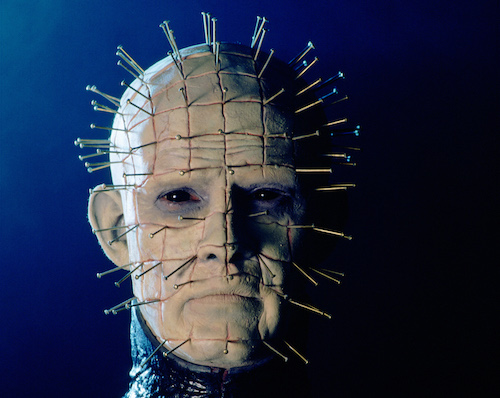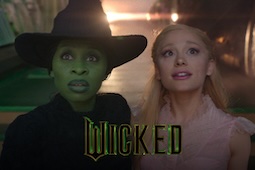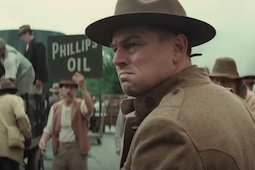
Clive Barker's memorably grisly 1980s classic Hellraiser returns to Cineworld this October as part of our Horror Season. For his debut feature, Barker adapted his own novella The Hellbound Heart, bringing us the story of Uncle Frank who, in seeking transgressive pleasures, unlocks a mysterious puzzle box.
He is then transported to a horrific realm overseen by creatures known as the Cenobites. The movie's ghoulish imagery and groundbreaking make-up effects still provoke unease to this day and the movie is further augmented by the outstanding score from Christopher Young.
It's often said a horror movie is made by its score and that's very true of Hellraiser. Barker was compelled to reject an initial score from industrial band Coil, and Young's subsequent work adds delicious grace notes of complexity to the viewing experience. Here's why.
1. The Lament Configuration
As a story, Hellraiser marks the intersection point between pleasure and pain. Henceforth, Young's sumptuous score plays almost in direct opposition to the movie's ghastly images, unveiling not one but two gorgeous, fully orchestral themes that infuse a sense of beauty into the barbaric.
The main Hellraiser theme unspools on velvety strings and a measured low-register piano undercurrent. It's both attractive and forbidding at the same time, first heard during the film's opening credits, and alluding to the contradictory impulses of the infamous Cenobites who will appear later on.
2. Frank's resurrection
Young's other primary theme is a grandiose waltz that refers directly to the wicked character of Uncle Frank (Sean Chapman). More specifically, it alludes to his time spent in hell and his success in escaping from the realm of the Cenobites, an event that brings otherworldly horror into the life of Frank's niece Kirsty (Ashley Laurence).
The moment when Frank is resurrected as an oozing, quasi-human mess is not only a marvel of prosthetic make-up and time-lapse photography. Via the careful application of Young's music, it is transfigured into a moment of appalling awe and wonder, a perfect distillation of Barker's writing.
3. The Cenobites appear
Melody is very much thrown aside when it comes to the music for the Cenobites. Young instead deploys the musique concrete technique whereby various acoustic sounds are used in lieu of traditional orchestral set-ups. And what memorably uncomfortable sounds they are.
Dissonant clangs and rattles, percussion and distorted sounds accompany the Cenobites. Appropriately enough, the music is drained of all humanity and thematic construct to reflect the decidedly in-human nature of the hellish creatures who are led by the unmistakable Pinhead (Doug Bradley).
4. Frank and Julia reunited
Once the treacherous Julia (Claire Higgins) is reunited with the resurrected corpse of her ex-lover Frank, the true genius of Young's score becomes clear. Julia must attain the blood of innocent victims to nurse Frank back to full health, thereby securing her own corruption.
The main Hellraiser theme is thereafter deployed as an ironically romantic lament between two thwarted lovers, one of whom has been to hell and back, while the other is heading there for the first time, and fast. It's a fine example of how orchestral writing can transfigure our basic expectations of character.
5. Kirsty solves the puzzle
As the film reaches its grisly conclusion, Young intentionally has his main themes collide, musically resolving both the Frank/Julia love affair and the deal Kirsty has made with the Cenobites.
The final resurgence of the main Hellraiser theme makes one thing absolutely clear: the Cenobites are still out there, ready to prey on another unsuspecting soul who wants to venture to the other side. The music ably keeps us on tenterhooks, making us anticipate Young's increasingly spectacular work in Hellbound: Hellraiser II (1988).
Are you ready to meet the Cenobites again? Click the link below to book your tickets for Hellraiser. The movie screens on October 9th.










.jpg)


.jpg)
.png)






